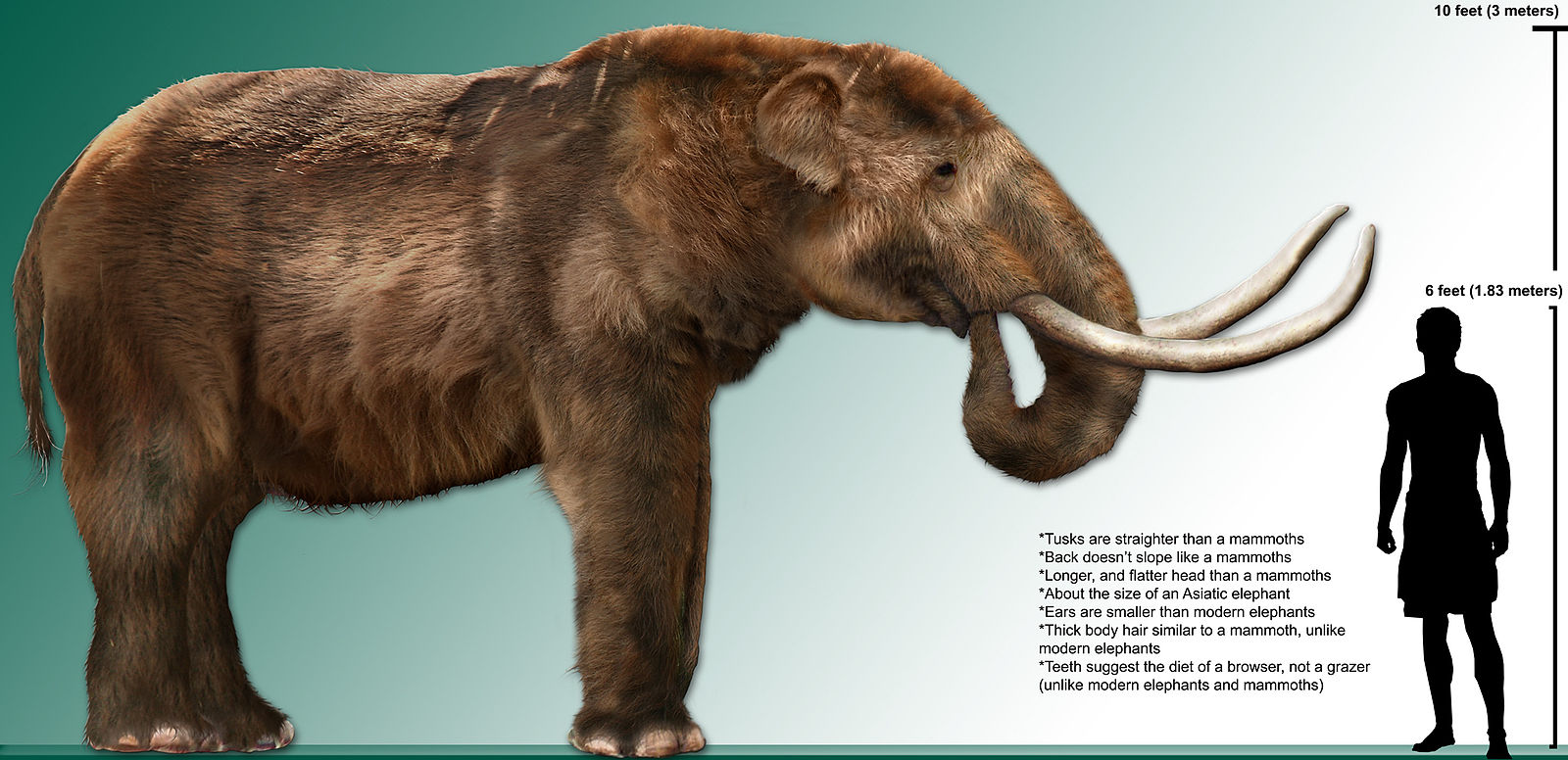
130,000-Year-Old Mastodon Skeleton Suggests Humans Could Have Been in America 100,000 Years Before Previously Thought
A mastodon compared to a human. Image credit: Dantheman9758
The team at the Natural History Museum carefully excavated and examined the site, which was mostly preserved under several feet of dirt. They documented the location of each piece and saved samples of dirt and rock in addition to the bones and large stones.
They consulted experts in dating ancient geological deposits and bones, compared the stones found at the site to those from other well-documented sites in Africa from the same period, and examined other mastodon carcasses to determine if natural processes could have caused the bones to be arranged in the same patterns.
They even created their own stone tools and smashed elephant bones to test if it was possible to do so and if the resulting bones looked similar to those found at the site. Ultimately, they ruled out the possibility that scavenging animals or construction work at the nearby State Route 54 had caused the damage to the bones.
The team at the Natural History Museum carefully excavated and examined the site, which was mostly preserved under several feet of dirt. They documented the location of each piece and saved samples of dirt and rock in addition to the bones and large stones.
They consulted experts in dating ancient geological deposits and bones, compared the stones found at the site to those from other well-documented sites in Africa from the same period, and examined other mastodon carcasses to determine if natural processes could have caused the bones to be arranged in the same patterns.
They even created their own stone tools and smashed elephant bones to test if it was possible to do so and if the resulting bones looked similar to those found at the site. Ultimately, they ruled out the possibility that scavenging animals or construction work at the nearby State Route 54 had caused the damage to the bones.
Advertisements
18 August 2023
Advertisements



